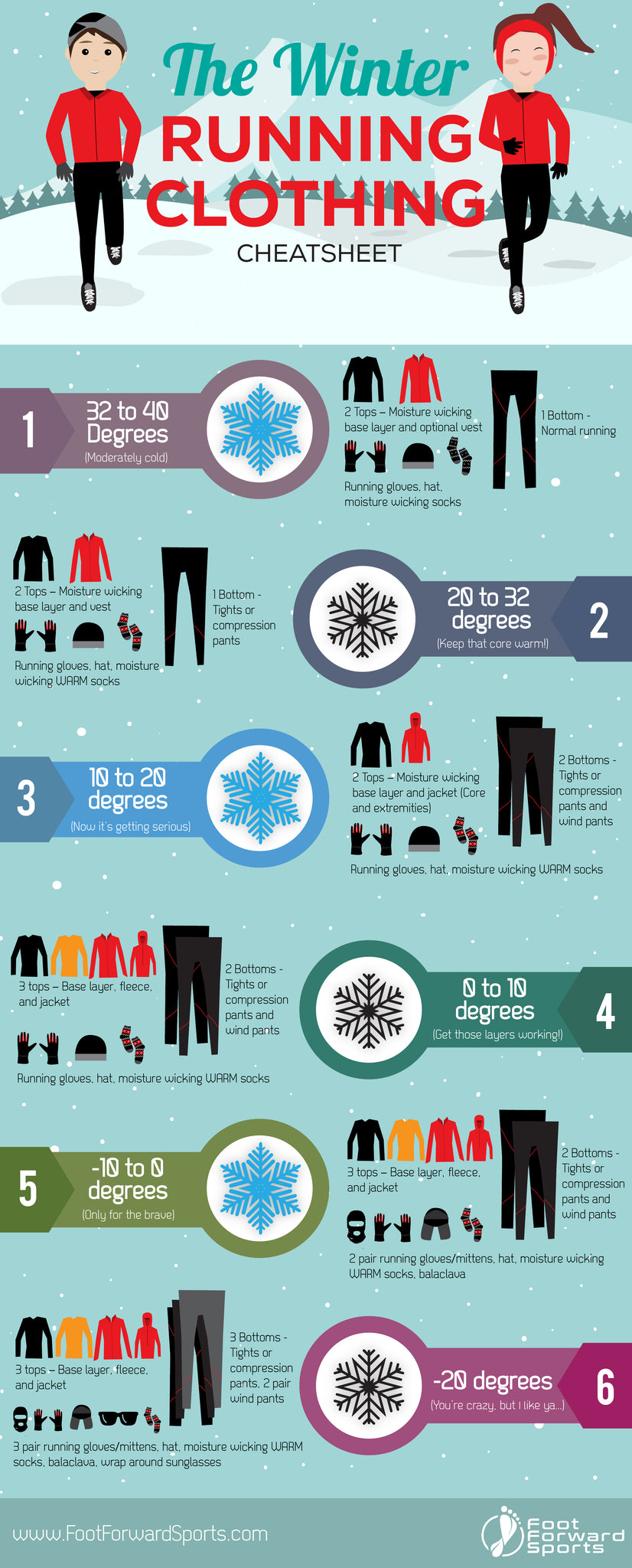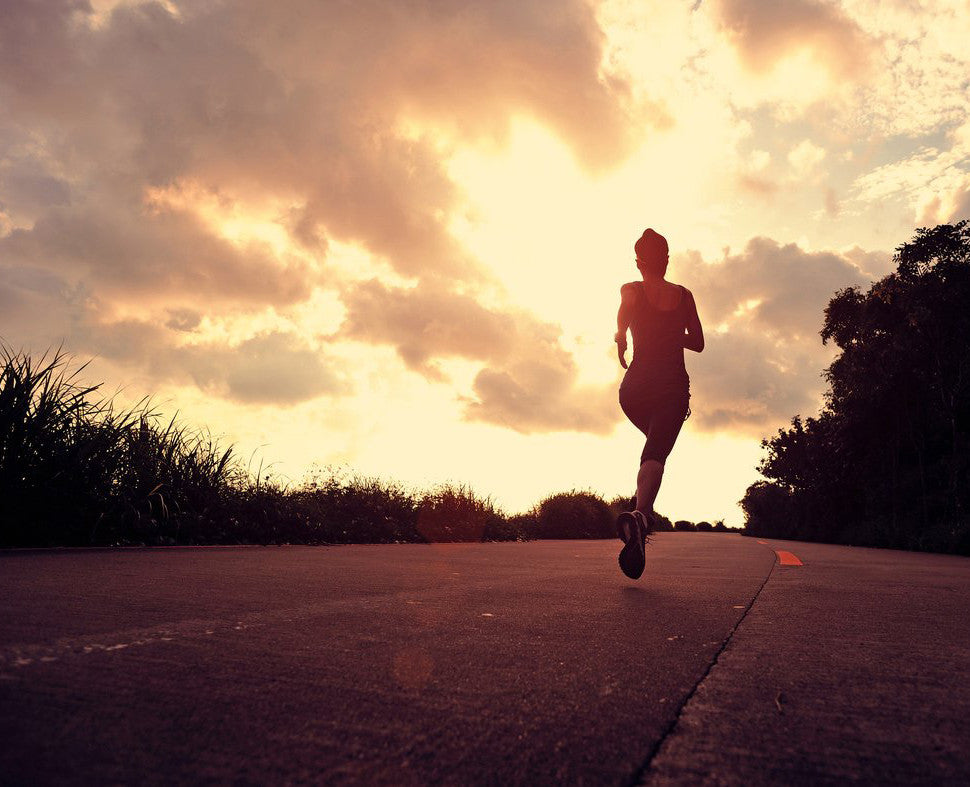-
Some runners take a winter break from training or hit the treadmill to avoid the uncomfortable and treacherous winter running conditions. Of course, if you’re in Hawaii you don’t have to worry about this, but for those of us in cold weather winter areas these 9 tips can help you propel through the winter months without missing a stride!
1. Motivate Thyself!
Whether you set up your morning alarm to play “Eye of The Tiger”, listen to running success subliminal messages while you sleep (or at work for afternoon runners), or make a running date with a friend, deciding on a cold weather running motivation routine is essential. The latter of these recommendations has proven for many to be the most powerful as once you have another runner waiting on you it’s a lot more difficult (for both of you) to back out. It helps to hold both you and your running partner accountable. Group running clubs can be even better in some ways as motivation tends to compound with multiple runners working together. If you’re new to your area or just lack running friends as motivated as you then check out MeetUp.com to find a running group nearby. And don’t worry! You’ll find once you’re out there that a cold weather run can be extraordinarily peaceful, yet exhilarating.
2. Lace Up The Right Way
Make sure you put on moisture wicking socks that also retain warmth. SmartWool makes some that are up to par . We like Bridgedale Endurance Trekkers, but there are a bunch of options elsewhere. Here are a bunch of other options you can browser through.
Then look for running shoes that have the least amount of mesh so that you insulate your feet, keeping the cold air, snow, and slush out and the warmth in where your toes need it to be! Running through a just above freezing temperature puddle of water or slush in ultra breathable running shoes is not a good way to start your run out… or end it, for that matter. Look for shoes that have Gore-Trex uppers if you need to invest in some winter shoes.
3. Gear Up!
You sure don’t want to head outside wearing a sleeveless running tee and shorts, but you don’t want to bundle up to the point that you’re sweating either. Otherwise you could catch a chill and potentially a cold. You shouldn’t be hot once you’re dressed. Plan your clothes as if it’s 15-20 degrees warmer than it actually is and do so in layers with zippers so you can let your clothes breathe if you’re getting too warm without having to remove a layer. And moisture wicking as the first layer is always a great idea to keep the sweat off your skin. After that, it’s just gloves and hats!
Nike Thermal Running Gloves are a a great option that aren’t too restricting
If you’re not sure how to dress check out our Winter Running Clothing CHEATSHEET!

32-40 degrees (Moderately cold)
2 Tops – Moisture wicking base layer and optional vest
1 Bottom – Normal running
Running gloves, hat, moisture wicking socks
20 - 32 degrees (Keep that core warm!)2 Tops – Moisture wicking base layer and vest
1 Bottom – Tights or compression pants
Running gloves, hat, moisture wicking WARM socks
10 to 20 degrees (Now it’s getting serious)2 tops - Moisture wicking base layer and jacket (Core and extremities)
2 bottoms – Tights or compression pants and wind pants
Running gloves, hat, moisture wicking WARM socks0 to 10 degrees (Get those layers working!)
3 tops – Base layer, fleece, and jacket
2 bottoms – Tights or compression pants and wind pants
Running gloves, hat, moisture wicking WARM socks
Negative 10 to 0 degrees (Only for the brave)3 tops - Base layer, fleece, and jacket
2 bottoms – Tights or compression pants and wind pants
2 pair running gloves/mittens, hat, moisture wicking WARM socks, balaclava
Negative 20 degrees (You’re crazy, but I like ya):3 tops - Base layer, fleece, and jacket
3 bottoms - Tights or compression pants, 2 pair wind pants
3 pair running gloves/mittens, hat, moisture wicking WARM socks, balaclava, wrap around sunglasses
4. Increase Visibility
With the winter comes the Winter Solstice and thus much shorter days. So if you’re a morning runner or afternoon runner, you’ll likely be hitting the pavement in low visibility conditions. If there’s inclement weather and significant snow then the snow piles from plowing are going to make you even less visible. So reflective gear becomes even more important. Foot Forward Running Belts come with reflective stripes (or reflective logo in the case of the Running Belt Flash), but that may not be enough in the winter. Your goal should be to shine as much as possible. That means LED headlamps, clip-on lights, LED wristbands, reflective and fluorescent gear, and even lace lights. Pile it on! There’s no shame in safety!
5. Be Realistic
Try to get out there and run when it’s warmest. That means midday when the sun is hottest. If you simply can’t run in the daytime, you can always split up your runs between the morning and later afternoon and still get your miles in. You likely won’t make tremendous strides in your time or distance over the coldest months, but you can certainly maintain and be at a much better baseline come Spring to really advance your running fitness.
6. Get Warmed Up
Light stretching is great to prepare for your run, but you can approach your warm up in a variety of ways. Use a jump rope, climb your inside stairs a few times, quickly clean the kitchen. Anything to start moving while you’re still inside and away from the cold. Once you get the blood pumping and your core temperature up your body will be much better prepared to step outside without feeling cold and you’ll be much less susceptible to a winter running injury.
7. Know How to Handle Windy Conditions
If it’s windy (and it will likely be at least a little windy), you’ve got to be ready for it. The most obvious technique is to use a scarf or balaclava over your face, but sometimes that’s not enough. Be strategic with the wind. If you start off running into the wind you will be running with the wind at your back after you’ve possibly broken a sweat. This will decrease the chances of getting chapped lips, or windburn. And if running into the wind is getting to be too rough, turn around and run with it for a few minutes before turning back to give your face a rest. Lastly, you can always use petroleum jelly (Vaseline), BodyGlide, or another similar skin protective product to protect your face from wind.
8. Warm Up Fast Afterwards!
The last thing you want is to catch a chill, and right after your run your body is going to drop in temperature quickly. You’ll likely have broken a small sweat even if you’ve dressed properly for the temperature. So the first thing to do is get inside and change out of your damp clothes. If you’re traveling to meet up with your running group a nice little running hack is to bring a warm drink in a dual wall thermos like you can get from Hydro Flask or Klean Kanteen. Leave it in your car and grab it as soon as you finish your run. Drink up and keep your temperature up enough to avoid a chill before you can get changed inside.
9. Travel
If you simply CANNOT deal with jogging in the cold, there are always more creative options to keep running. If you’re up north in the U.S. make a trip down south where the weather is not only warm, but could be perfect for running a marathon or other race. For example, Florida gets so hot in the summer months than winter makes for the most moderate weather and very easy to run well in. Look up the race schedules in different southern states using a site like Active.com where you can find a race by you.
To browse winter gear check out some great options on Amazon
-
When should I run? How fast? Will I faint? How do I pace myself? Do I need a Fitbit? ...Take a deep breath and relax! You may be new to running, but human bodies have been doing this since... well basically forever! So sit back and let us answer your questions about how to get started on your journey of becoming a runner!
1. I hear you need a running plan... how should I plan?
Take look at your schedule. When do you have a little free time? Morning? afternoon? evening? Whenever it is, plan to set aside some time for your running routine. Whether it's 15 minutes, 45 minutes, or longer, commit to to a time and day at least 3 times a week. Next, write it down! There's something to be said about putting pen to paper and its ability to help your subconscious commit to something more strongly than if you were to just plan for it mentally.
Hint: Even if you can only put in 10-15 minutes of running 3 times a week, you should start to notice some really great benefits, both mentally and physically. And if a 10 minute run scares the heck out of ya, you can always start with brisk walking or even just a lap around the block. We're all at different levels, so NEVER let that discourage you.
Now, don't jump right into it thinking that you'll be able to run a full marathon your first time around the block! Don't push yourself too far or too fast or you could end up injuring yourself and putting your new lifestyle as a runner on hold.
Try beginning with no more than 20 minute runs, at maximum 3 days out of the week. Once you get a hang of that and feel confident in your ability to finish your 20 minute run, try scaling up.
Another approach is to run in intervals. Start with 3 or 4 minutes running, and then walk for 1 minute. Then repeat until you hit your minute goal. Your stamina will increase over time and you'll soon be able to run more easily, and safely as your body should adapt.
And lastly, focus on time, not distance. The mileage will come, but focus on keeping yourself out there at whatever pace you have to and don't hurt yourself trying to finish a mile goal.
2. Do I need any kind of special equipment for running?
Unless your into the barefoot running movement, you'll certainly need a solid pair of running shoes. This is really the only absolutely essential gear to get started, but we do suggest some others to make your runs much more enjoyable and thus more successful. So, unless you find amusement in standing out as the guy or gal who runs in blue jeans or some other semi casual attire, some sort of fitness clothing is suggested : P
When first choosing your running shoes, we suggest heading to a running specialty store where they can analyze your foot striking and pick the best pair for your running style.
For women, we suggest investing in a properly fitting sports bra. You can find some really cool ones made out of special moisture wicking material that can help keep you from overheating and leave you a little more comfortable on your run.
To bring your essentials along with you we also highly recommend a running belt for iPhone, keys, wallet, and anything else that you may want to carry with you on your runs. If you're running somewhere that's not crowded, it's a very good idea to have your smart phone on you in case of a fall or anything else that may threaten your safety.
If you're looking for a high quality waterproof running belt for iphone 6 Plus and all other size phones, take a look at our Foot Forward Running Belt which eliminates bounce completely with adjustable waist band and secure, easy access, UltraFlex pouch that expands to fit more contents than other running belts on the market.
3. Will I get sore?
If you look to soreness as a positive sign of a good workout, then you'll be happy to hear that when you start out you'll certainly experience some sore leg and ab muscles.
However, if you dread soreness like nothing else, don't worry. You'll push past it and once your body gets more familiar with your routine, it will lessen more and more.
Note: If you experience intense, acute pain anywhere on your body, take a break to let the area recover. This will help to prevent serious injuries and tendonitis like issues such as shin splints. Don't start training again until the pain subsides, and if it doesn't, see a doctor to make sure you don't have something more serious going on. Never overtrain!
4. How do I pace myself?
Pacing is something many a runner struggle with. A good way to determine if your're at a good pace is to use the "conversation test". If you can carry on a conversation with a fellow runner without gasping for air then that's a sign that you're around where you should be. It's a better idea to err on the side of caution and end up going a little slower than your ability than to overdo it.
5. Is the treadmill or outside running better?
Each option has its pros and cons.
Outdoor running is preferred by many because it offers fresh air, the potential for beautiful sights, and little bit different kind of a "runner's high". However, when it's 0 degrees outside, an indoor run can be quite the compliment to and outside run.
It's a little bit easier to change your pace as needed when outdoors, but the terrain typically causing more use of the tiny muscles in your feet which can create slight better balance training. That being said, the potential for injury increases a bit as well (of course, that's considering you don't face plant on the treadmill, by not operating it properly or tripping. Be careful!)
We suggest a combination of both. That way, if the weather doesn't permit an outside run, you can hit the treadmill and keep on your routine. There's even a school of thought that suggests treadmill running compliments outdoor running as the softer surface of the treadmill allows for a break in intensity of impact here and there, while allowing your routine to continue. It's possible that this could reduce overuse injury potential.
6. Should I keep away from running on hills?
No way! Running uphills a great way to improve your fitness level and work your muscles more intensely once you're able to. In fact, it can even be easier on your knees as the gravitational impact is lessened.
However, take it easy when running downhill as there is actually a greater gravitational impact and you can damage your knees. Especially if you're new to running.
7. What in the world are "side stitches"? This sounds dangerous...
Side stitches, also referred to as side cramps, are something most who have ever exercised have run into at some point. The cause is lack of oxygen in the gastrointestinal muscles and can usually be prevented by avoiding eating shortly before a run, making sure you're well hydrated prior to running, or lessened by bending over at the waist when you're exhaling during your run and/or by exhaling in a long and hard way.
8. What kind of diet should I stick to?
Make sure to eat healthily and balanced. That means don't go super low carbohydrate or low fat, get plenty of quality protein to support muscle growth and prevent atrophy, and get a good variety of organic fruits and vegetables.
Quality fats from sources such as:
- Coconut oil
- Extra Virgin Olive Oil
- Grass Fed Meats
- Fish, Fish Oil or Krill Oil
- Small amounts of seeds and nuts
If you're getting into running to lose weight, you should start to see results somewhat quickly. You'll want to make sure you don't over or undereat. One thing about adopting a new workout routine is that you'll likely be hungrier than you may have been in the past. Just make sure to make healthy choices, eat natural, and don't overdo it on one particular food group.
9. Should I start competing?
Getting involved in a 5k or even 10k race is a great way to ensure you stick to your training. It is our belief that in order to be successful, setting goals is the first step. One very concrete goal is finishing an organized race. Whether you finish first or last, don't sweat it (well, you're going to be sweating for sure, but you get it...). Run to improve yourself. Even you come in dead last, try to beat your time next round.
A saying that we at Foot Forward Sports have coined (to the best of our knowledge) and strive to live by is:
ACCEPT WHERE YOU ARE. BE BETTER.
So stay encouraged! Stay focused! And report back on your progress by commenting below!
-
Welcome to the Official Foot Forward Sports Blog!
Whether you're a long time fitness fanatic, a complete newbie, or somewhere in between on the spectrum, Foot Forward Sports is here to encourage, inspire, and educate you to reach all of your fitness goals!
Our company first started as a simple Facebook community page on which we strove to support and encourage runners, and those interested in running to get out there, get running, and attain whatever the end goal was.
Through interacting with our awesome Facebook followers, we learned that one very much desired tool in the arsenal of runners and aspiring runners was something that allowed for valuables to brought along on a run without bouncing all over the place (keys, phones, wallet etc.)
That's when we decided that it was time to start providing some actual products that could help our followers and others out there to exercise in a more enjoyable and effective way.
Thus, the Foot Forward Running Belt was released! The feedback has been incredible so far and we're truly encouraged by all of the kind words from those who have purchased our running belts to continue on this path and release other running and fitness accessories.
On that note, we want to let you know that new variations of top high quality fitness gear are currently in the works and will be released in the very near future!
So stay tuned!
Thanks for dropping by! Stay motivated, and if you haven't already today... get out there and get running!
Most sincerely,
Robert
The Foot Forward Team






